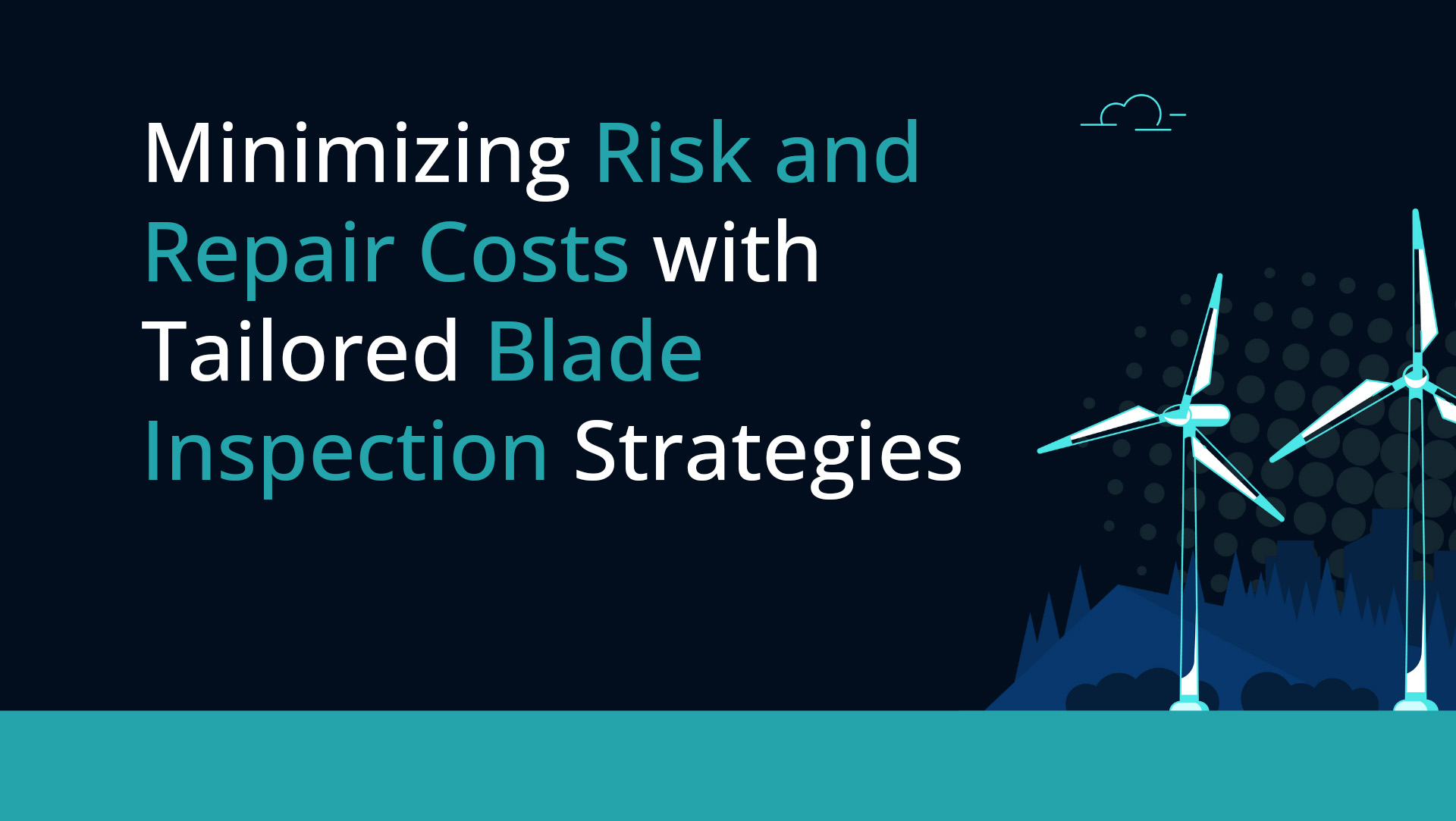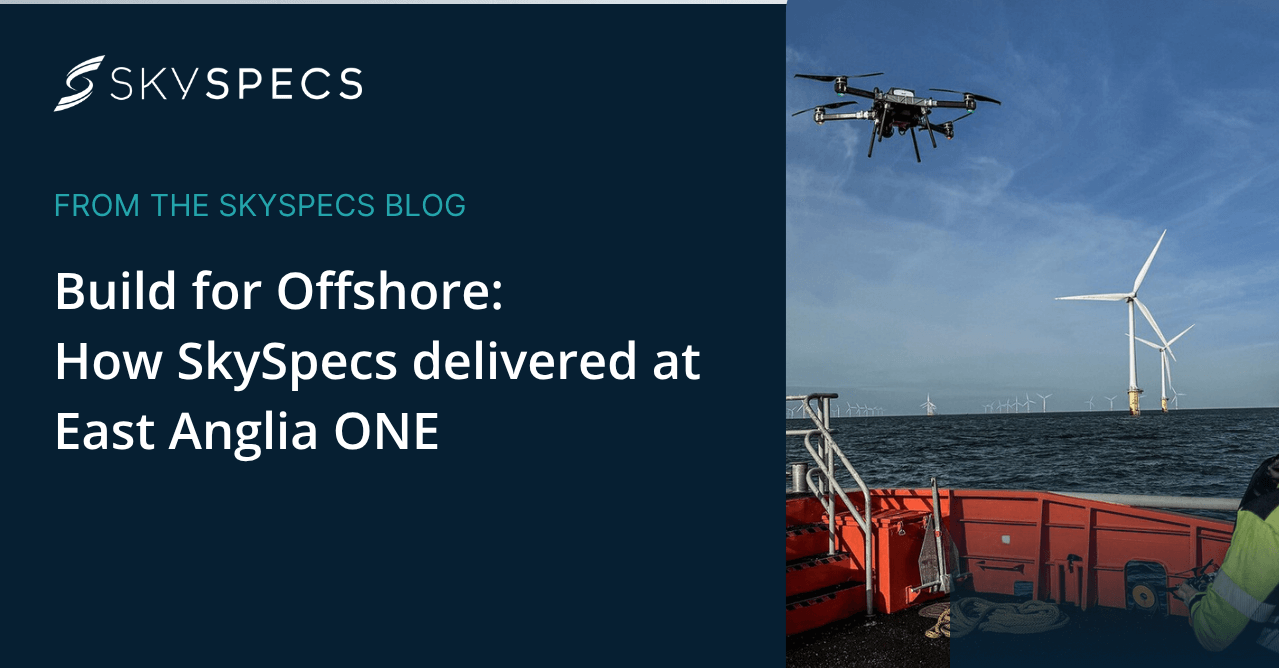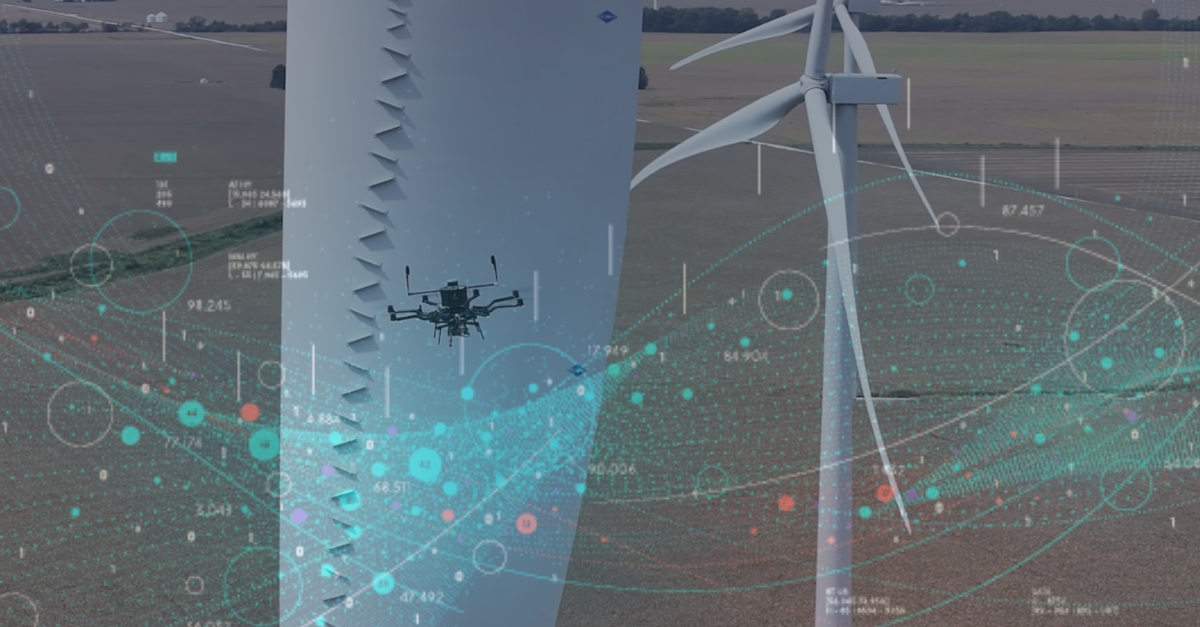While it might not be possible to completely eliminate risk and repairs for turbine blades, there are ways we can minimize them. Blade damage can reduce efficiency, cause tower failures, and increase maintenance and repair costs. To get the most out of renewable assets, it’s essential to reduce costs and increase the efficiency of each asset – and a big part of that is risk management.
In a recent webinar, we sat down with SkySpecs’ Dan Partin, VP of Account Strategy & Blade Services, Ken Lee, Fleet Engineering Manager at EDF Renewables North America, and Jeff Hammit, Founder of Wind Blade Solutions LLC. Together, they discuss the strategies for reducing risk and repair costs with more tailored blade inspections, including data management strategies, new technology, and tailored inspections.
Keep reading for the top takeaways from the webinar, or download the webinar.
The common blade risks to be aware of
Wind turbine blades face many risks that can cause damage, loss of effectiveness, or even tower failure in some cases. Blade damages can lead to significant disruptions, which can prove very costly when it comes to repairs and disruption to business.
The types of risks facing the wind industry include systemic issues, such as design flaws and manufacturing defects. There are also weather elements such as lightning strikes, ice, and sudden wind events that could speed up erosion and blade damage – all of which can be hard to predict and avoid.
In today’s industry, the rising trend is more giant turbine blades to increase output. The problem is that larger blades mean heavier structural loads, with more challenges and costs associated with repairing and transporting the blades if they need replacing.
OEMs are under pressure to design larger turbine blades to increase output, but it becomes more challenging to balance efficient and robust design with costs and risk management.
How to mitigate and manage blade risk
While the risk of damage and associated costs pose a big challenge for owner-operators and OEMs, there is cause for optimism as well. New technology is helping those in the industry to reduce risk and understand more about the design of blades and the common issues that can cause damage.
Technology such as condition monitoring systems can also help to predict faults, which can help engineering teams prioritize repairs and plan maintenance budgets accordingly. Drone inspections can also help to gather more accurate data about any current defects without the need to send a repair crew to assess the damage in person. This can help reduce the inspection cost so teams can prioritize which assets need more closely assessing and repairing.
It may not be possible to avoid risk altogether, but with the right blade inspection strategies, data management, and tools, we can help reduce those risks and costs.
How data can help to reduce blade damage risks
To effectively manage repairs and maintenance, you must know exactly what’s happening with your assets. That’s where having good data comes in.
However, just collecting that data is only step one. As Ken explains, you need to put that data to good use and develop a tailored blade inspection plan to help you further reduce risk and costs.
Collecting data about turbine blades can help you predict faults, assess damage, and prioritize repairs according to budget and the level of damage.
What a successful blade inspection strategy looks like
The most important signal of success is simple – keeping blades spinning efficiently and off the ground, says Jeff. Any damages can result in loss of output and money, not to mention the costs associated with analyzing and fixing those faults.
Suppose there’s a catastrophic failure and a blade hits the ground. In that case, this causes all sorts of issues, including lousy press, issues with the landowner, the cost of replacing the blade, how long it takes to get a replacement, and the business interruption involved with repairing or replacing blades.
So, that should be the critical measure of success in your blade inspection strategy – reducing downtime, damages that impact efficiency, and repair costs.
To do this, these are the areas that owner-operators need to focus on:
1. Building a tailored blade inspection strategy
As Dan explained, you need a tailored blade inspection strategy for each blade model at each site. This strategy needs to consider any known systemic issues within each variant and environmental factors in that area that might impact the blades’ effectiveness.
A blanket approach to blade inspections is a good start, but every wind farm and every asset on that farm differs. You may need to tweak your approach to stay on top of risk management. One example Dan gave was when working with EDF, SkySpecs helped to design a custom flight path for a particular blade model to identify systemic issues with drone technology.
2. Ensuring the configuration of your site
Configuration of your site can also help you make better decisions about what needs to be inspected and what risks impact particular blade models on other sites.
Building a good relationship with the OEMs is essential to get their insights into any manufacturing issues to watch out for so you can better plan repairs and budgeting.
3. Measuring and comparing data on failure rates
Keeping track of failure rates and the recurrence of defects is also essential to help you prevent and predict issues in the future. If your data suggests that a certain wind farm experiences environmental damage at certain times of the year, you can plan your repair budgets accordingly.
Ken says this data should be compared to see if there is a continued reduction in failure rates or a year-to-year decrease in repair spending.
4. Timing of inspections
Another element of a successful inspection strategy is the timing of your inspections throughout the year. In North America, it’s common to see inspections take place in July. The problem with this is that demand for repair crews is high now. You might find that many repair crews are booked up, leaving you stuck with damages that need to be addressed quickly.
Thinking about the right time of inspections and when you might undertake repairs is crucial to ensure that your fleet is maintained correctly to ensure the minimum business disruption.
Overall, building an inspection strategy is a balancing act. You need to consider the methods of how you perform inspections, the type of blade models in operation, what the data says, the timing of your repairs, and the cost on top of it.
Watch the webinar for more insights into building a tailored blade inspection strategy and hear more from Dan, Jeff, and Ken.









